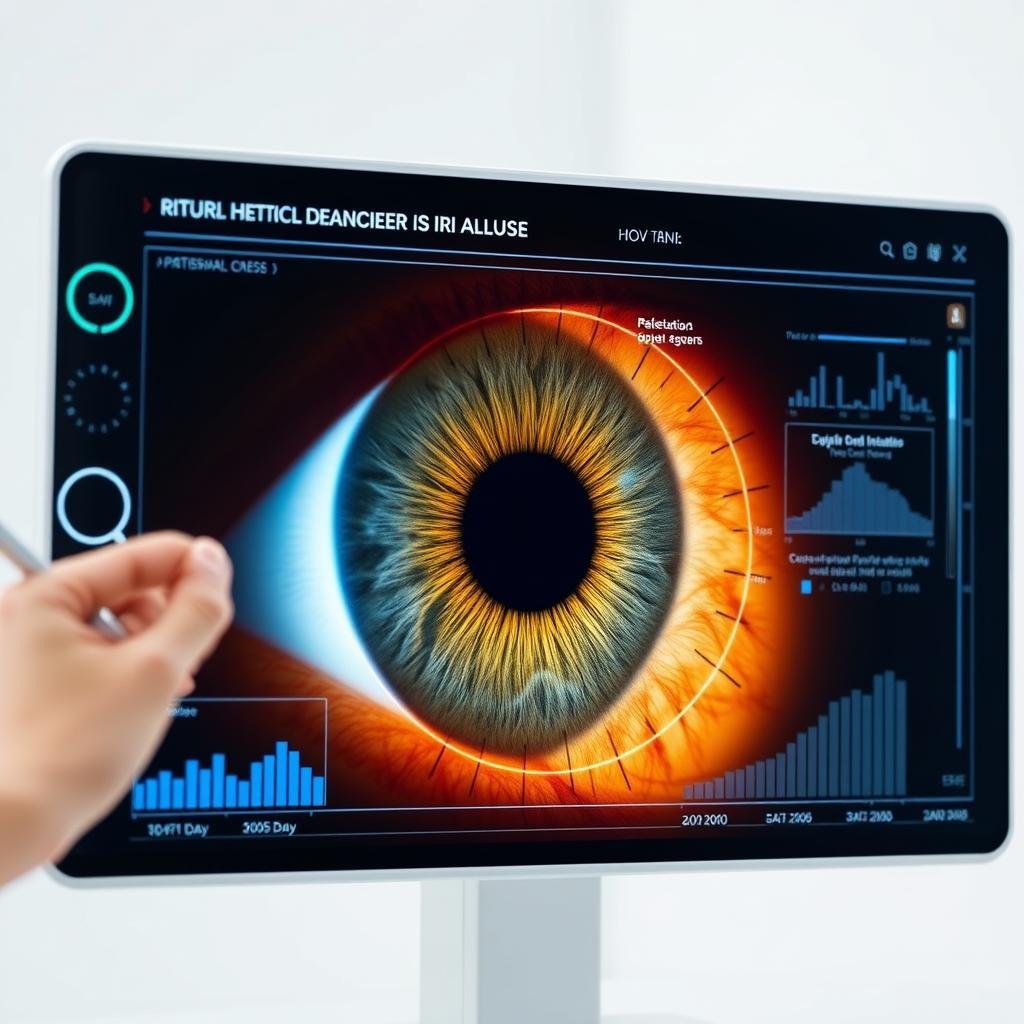Iris Patterns: Did you know your iris contains over 240 unique identifiable features? That’s more than twice the number found in fingerprints. This intricate network of patterns in the colored part of your eye is so unique that even identical twins have completely different iris structures. As we journey through the fascinating world of iris patterns, we’ll discover how these delicate structures not only help us see but also serve as biological passports, potential health indicators, and cultural symbols throughout human history.
Why No Two Irises Are Alike

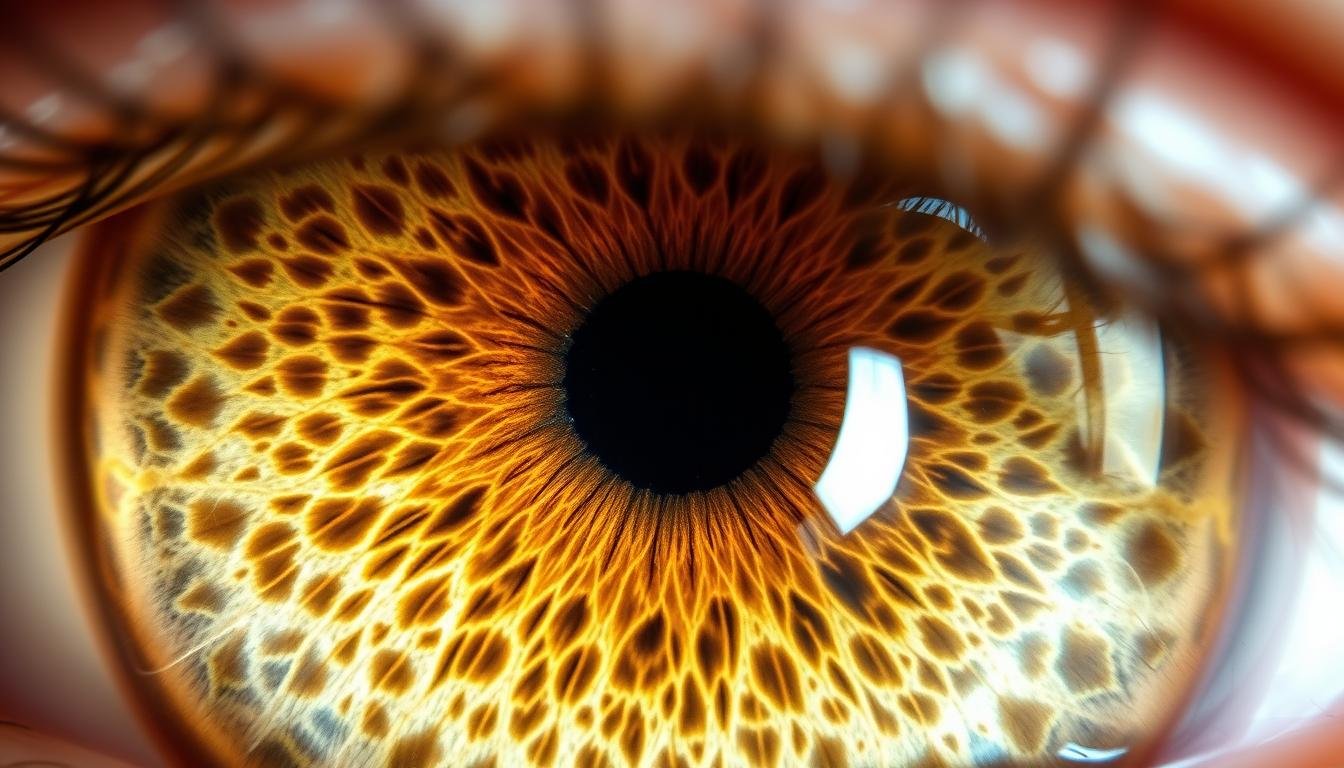
The intricate patterns of the human iris contain over 240 unique identifiable features
The iris is a thin, circular structure in the eye responsible for controlling the diameter of the pupil, thus regulating the amount of light reaching the retina. But what makes each iris pattern so unique? The answer lies in a fascinating combination of genetics, epigenetics, and random development.
The Science of Iris Formation
During fetal development, a layer of cells called the iris pigment epithelium forms the foundation of the iris. Above this layer, mesenchymal cells migrate and form the stroma, creating the distinctive patterns we observe. The final structure develops through a process called chaotic morphogenesis – a complex interplay of genetic instructions and random cellular movements.
This developmental process is so intricate that even genetically identical individuals develop completely different iris patterns. Think of it like snowflakes – the same basic components arranged in countless unique configurations.
The Anatomy of Iris Patterns
When examining iris patterns, several key structures stand out:
- Crypts of Fuchs: These are openings located on either side of the collarette that allow aqueous humor to bathe the stroma.
- Collarette: The thickest region of the iris that separates the pupillary portion from the ciliary portion.
- Radial Contraction Folds: Fine radial folds extending from the pupillary margin to the collarette.
- Pigment Rings: Colored bands that wrap around the pupil, varying in width and intensity.
- Furrows: Pale lines that curve around the iris, creating distinctive patterns.
- Circular Contraction Folds: Fine ridges that run near the pupillary margin with varying thickness.
The Four Main Types of Iris Patterns
According to the Rayid model in iridology, there are four constitutional iris patterns:
| Pattern Type |
Visual Characteristics |
Prevalence |
| Jewel Type |
Dark colored dots or flecks within the iris |
Rare in pure form, often combined with other patterns |
| Flower Type |
Curved or rounded openings resembling flower petals |
Uncommon in pure form, usually combined |
| Stream Type |
Straight lines or streaks of color within the iris |
Common as a secondary pattern |
| Shaker Type |
Both dot-like pigments and rounded openings |
Combined pattern, relatively common |
While this classification system is used in iridologie, it’s important to note that modern science recognizes iris patterns as continuously variable rather than fitting into discrete categories. The complexity of these patterns is what makes them so valuable for identification purposes.
From Spy Movies to Your Phone: Iris Biometrics in Action
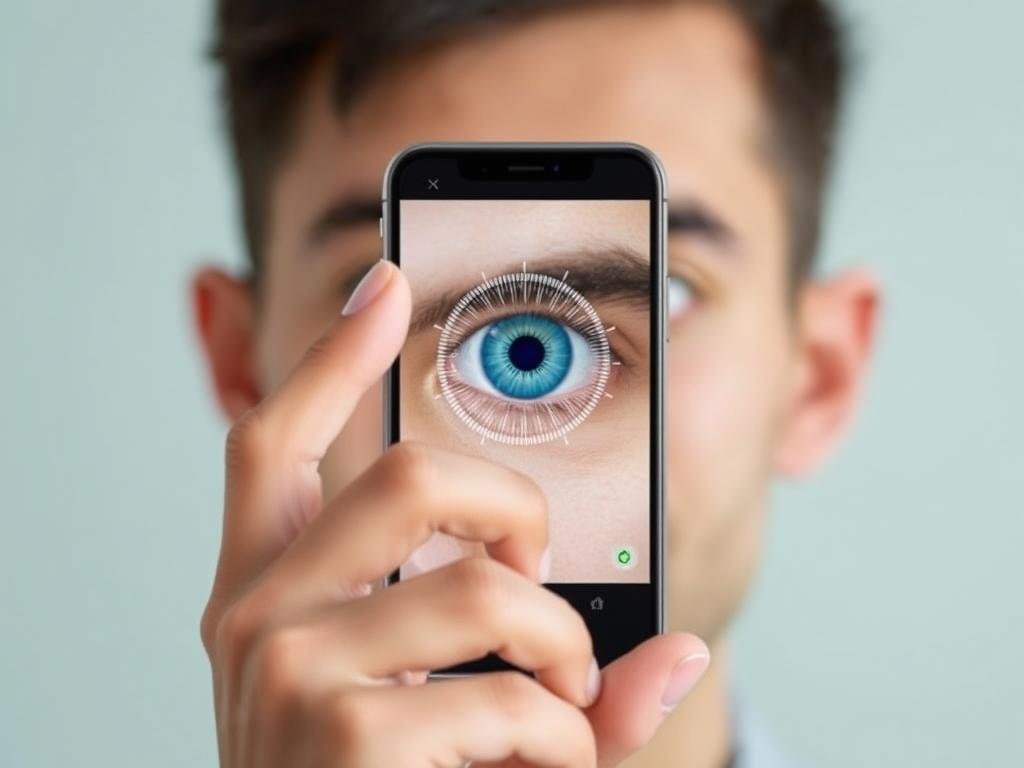
Modern smartphones now incorporate iris recognition for secure authentication
What once seemed like futuristic technology in James Bond films has now become a reality in our everyday lives. Iris recognition technology has evolved from high-security government applications to consumer devices we carry in our pockets.
How Iris Recognition Works
Iris recognition technology captures a detailed image of the iris using near-infrared light, which reveals the intricate patterns even in darkly pigmented eyes. The system then analyzes over 200 unique features, converting them into a mathematical template for comparison against stored records.
This process is remarkably accurate, with error rates less than 1 in 1.2 million – significantly more reliable than fingerprint recognition. The technology is also difficult to deceive, as iris patterns cannot be easily replicated or spoofed.
“The iris has a tremendous advantage as a biometric because it combines the three key factors: stability, uniqueness, and non-invasive capture.”
Dr. John Daugman, pioneer of iris recognition algorithms
Real-World Applications
Border Control
Many international airports now use iris recognition for expedited border crossing. The UAE’s IRIS system processes thousands of travelers daily with remarkable efficiency.
Smartphone Security
Several smartphone manufacturers have incorporated iris scanning as a secure authentication method, allowing users to unlock devices and authorize payments.
Sănătate
Hospitals use iris recognition to ensure accurate patient identification, reducing errors in medical records and treatment protocols.
Iris vs. Other Biometric Methods
| Caracteristică |
Iris Recognition |
Fingerprint |
Facial Recognition |
| Unique Identifiers |
240+ |
40-60 |
80-100 |
| False Accept Rate |
1 in 1.2 million |
1 in 10,000 |
1 in 100,000 |
| Contact Required |
No |
Da |
No |
| Stability Over Time |
Ridicat |
Mediu |
Low |
The superior accuracy and stability of iris patterns make this technology particularly valuable for high-security applications where reliability is paramount.
The Iris as a Health Crystal Ball: What Your Eyes Reveal
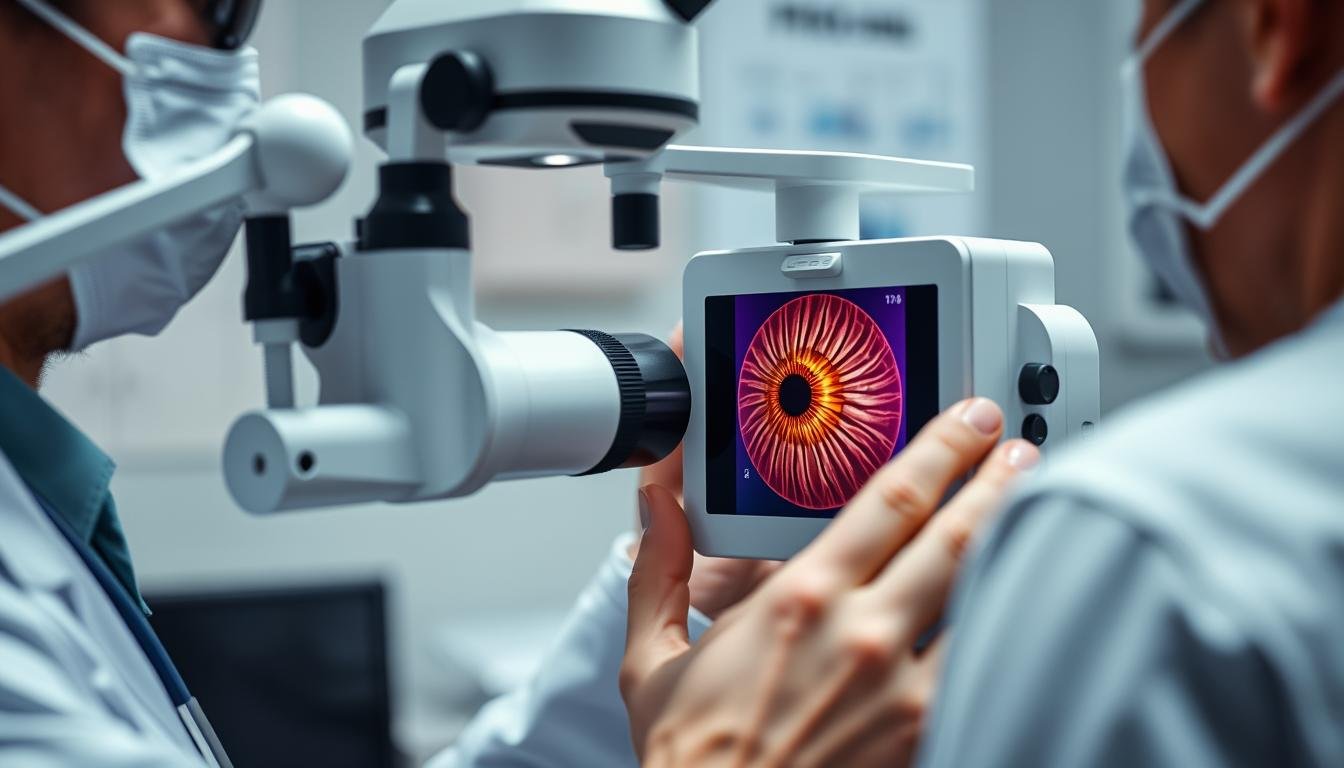
Emerging research explores connections between iris patterns and various health conditions
Iris Patterns: Beyond identification, the patterns in your iris may hold clues about your health. While traditional iridology (the practice of diagnosing health conditions through iris examination) lacks scientific validation, emerging research suggests some legitimate connections between iris characteristics and certain health conditions.
Genetic Conditions and Iris Patterns
Several genetic disorders manifest with distinctive iris features:
- Waardenburg Syndrome: Often presents with heterochromia (different colored irises) and a distinctive pattern of iris hypopigmentation.
- Marfan Syndrome: Associated with iridodonesis (trembling of the iris) and specific iris architecture changes.
- Down Syndrome: Frequently presents with Brushfield spots, which are small, white spots arranged in a ring around the iris.
Neurological Connections
Recent studies have identified correlations between certain iris patterns and neurological conditions:
A 2019 study published in the Journal of Neurology found that specific iris crypts patterns were more common in patients with certain types of epilepsy, suggesting a potential developmental link between the iris and brain structures.
Researchers at Duke University have also identified correlations between iris furrows and aspects of personality related to frontal lobe function, though these findings remain preliminary and require further validation.
The Future of Iris-Based Diagnostics
While we’re still far from using iris scans as comprehensive diagnostic tools, the field shows promise. Advanced imaging technologies and artificial intelligence are enabling researchers to detect subtle iris changes that may correlate with systemic conditions:
- Early detection of diabetes through iris vessel analysis
- Cardiovascular risk assessment via iris pigmentation patterns
- Potential markers for certain autoimmune conditions
It’s important to note that while these research directions are promising, they’re still developing. Current medical practice does not rely on iris analysis for diagnosis, and patients should always seek conventional medical advice for health concerns.
Beyond Science: Irises in Culture and Controversy
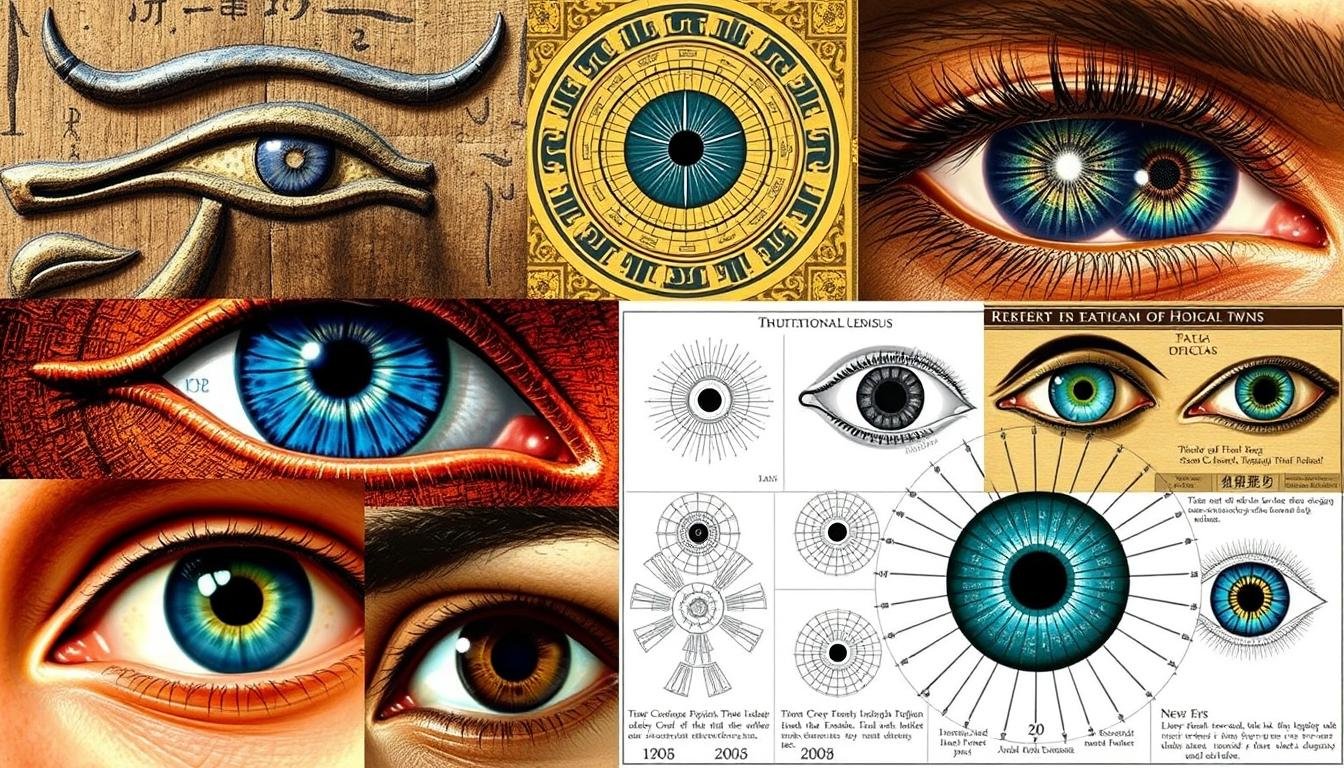
Eyes and iris patterns have held symbolic significance across diverse cultures throughout history
The human fascination with eyes and iris patterns extends far beyond scientific applications. Throughout history, cultures worldwide have attributed special significance to the eyes, often considering them windows to the soul or repositories of mystical power.
Historical and Cultural Perspectives
Ancient Egypt
The Eye of Horus symbol represented protection, royal power, and good health. Egyptians believed the eye had healing and protective properties, with its patterns representing different senses.
Traditional Chinese Medicine
Chinese practitioners have long examined the iris as part of diagnosis, believing different sections correspond to specific organs and that changes in iris color or pattern indicate imbalances in the body.
Greek Mythology
The goddess Iris personified the rainbow and served as a messenger between gods and humans. Her name was given to the colorful part of the eye, reflecting the many hues irises can display.
Iris Patterns in Art and Literature
Artists throughout history have paid special attention to the eyes in their works, often using iris details to convey emotion, character, or spiritual state. From Leonardo da Vinci’s meticulous eye studies to contemporary photographers specializing in iris macrophotography, the patterns of the iris continue to inspire artistic expression.
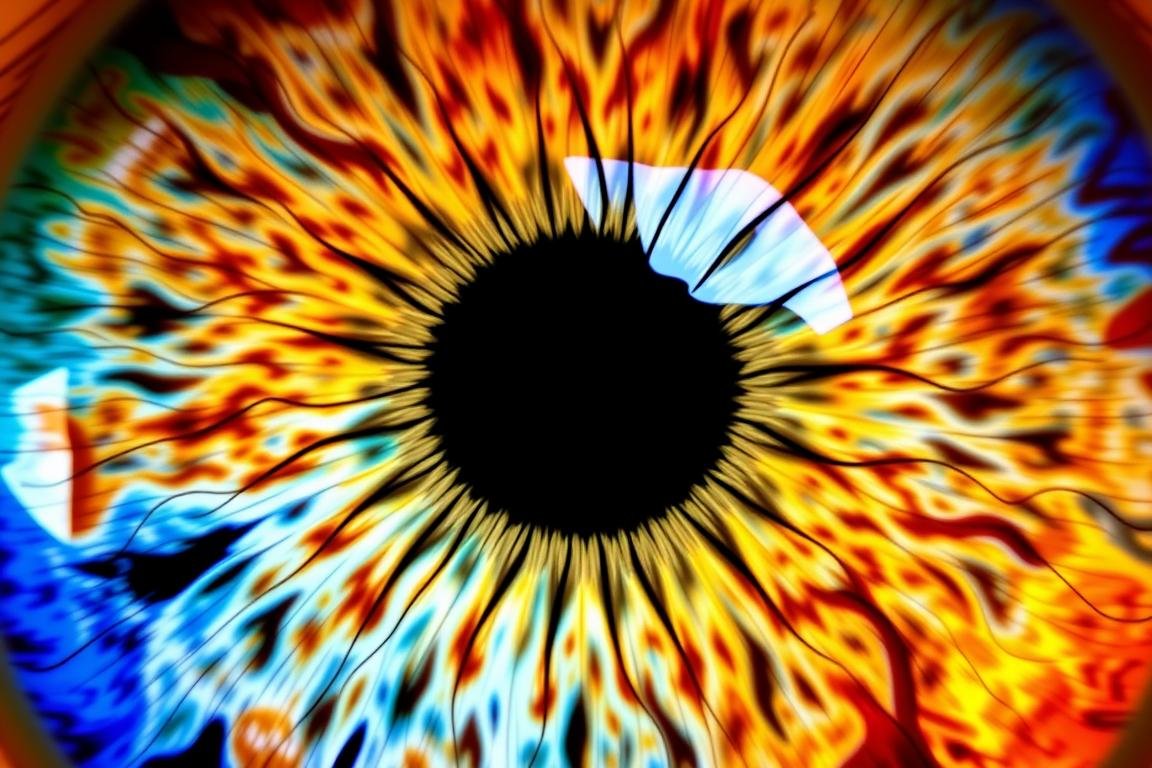
Contemporary artists transform iris patterns into personalized artwork, celebrating their unique beauty
Ethical Considerations and Privacy Concerns
As iris recognition technology becomes more widespread, important ethical questions arise:
Beneficii
- Enhanced security for sensitive facilities and information
- Reduced identity theft and fraud
- Streamlined access to services and facilities
- Potential health insights through non-invasive means
Concerns
- Potential for unauthorized surveillance and tracking
- Security of stored biometric data
- Lack of comprehensive regulatory frameworks
- Difficulty in changing compromised biometric identifiers
As with many emerging technologies, the key lies in balancing innovation with appropriate safeguards. Transparent policies, informed consent, and robust security measures are essential to ensure iris recognition technology serves humanity’s best interests.
Looking Forward: The Future of Iris Pattern Research
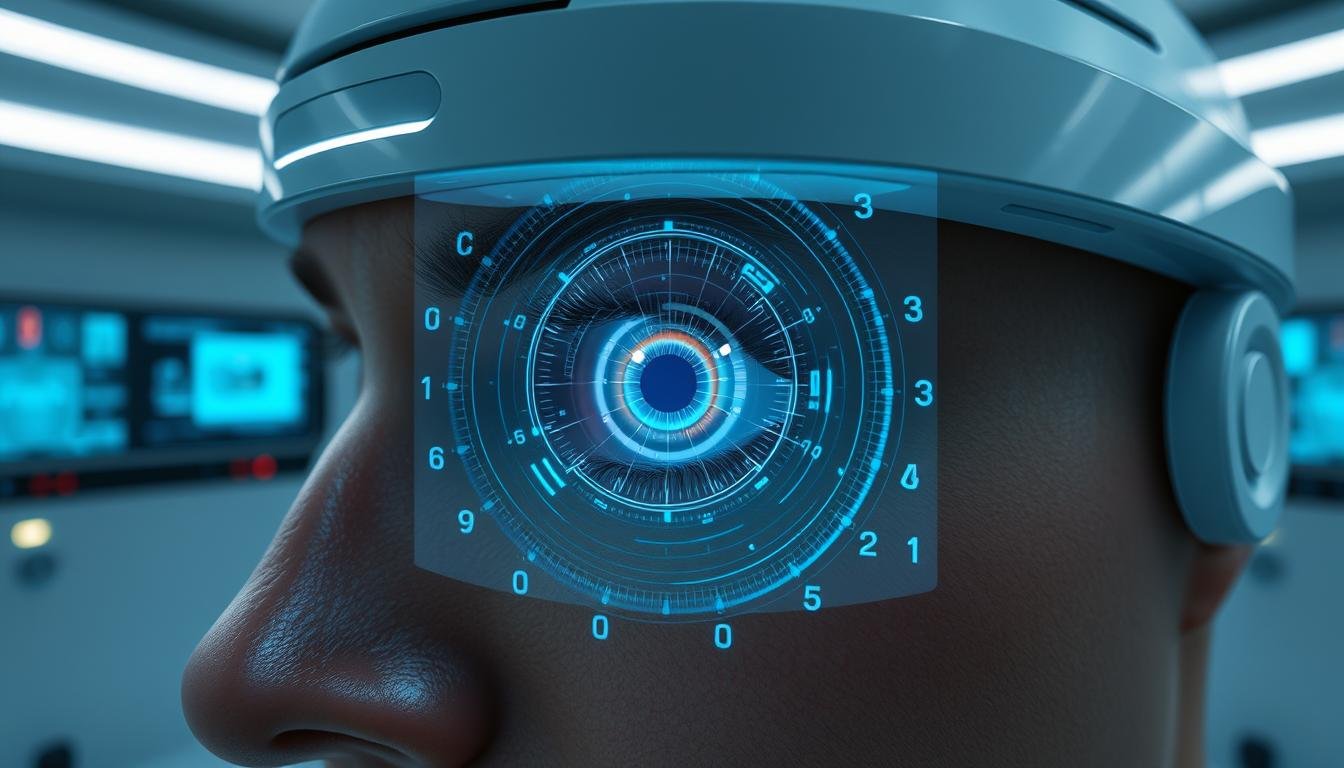
Next-generation iris technologies may combine security and health applications in seamless systems
The study and application of iris patterns continue to evolve rapidly. As technology advances, we can anticipate several exciting developments in this field:
Emerging Technologies
- AI-Enhanced Iris Analysis: Machine learning algorithms are becoming increasingly sophisticated at detecting subtle patterns in iris structures, potentially revealing new connections to health and identity.
- Multimodal Biometrics: Future systems will likely combine iris recognition with other biometric identifiers for even greater accuracy and security.
- Personalized Medicine: As connections between iris patterns and health conditions become better understood, we may see iris analysis incorporated into personalized health assessments.
Cross-Disciplinary Applications
The most promising advances often occur at the intersection of different fields. Iris pattern research is increasingly bridging disciplines:
Medicine + Technology
Combining ophthalmology with artificial intelligence to develop new diagnostic tools based on iris analysis.
Security + Healthcare
Integrating identity verification with health screening in unified systems that serve multiple purposes.
Art + Science
Using scientific understanding of iris patterns to create new forms of personalized art and expression.
As we continue to unlock the secrets hidden within the intricate patterns of the iris, we gain not only practical applications for security and health but also a deeper appreciation for the remarkable complexity of the human body.
Conclusion: The Eye as a Window to Identity and Health
The fascinating world of iris patterns reveals how a small structure in our eyes can contain such remarkable complexity and uniqueness. From the random processes that form these patterns during fetal development to the cutting-edge technologies that analyze them for identification and potential health insights, iris patterns represent a perfect intersection of biology, technology, and culture.
As research continues and technology advances, our understanding of iris patterns will undoubtedly deepen, opening new possibilities for security, healthcare, and personal expression. The eyes truly are windows – not just to the soul as ancient wisdom suggested, but to our unique identity and potentially to aspects of our health that we’re only beginning to understand.
Explore the Science of Biometric Recognition
Interested in learning more about how iris patterns are revolutionizing security and identification technology? Discover the latest research and applications in this rapidly evolving field.
Learn More About Biometrics
Frequently Asked Questions About Iris Patterns
Can iris patterns change over time?
Iris patterns remain remarkably stable throughout a person’s lifetime. Unlike facial features, which change with age, or fingerprints, which can wear down, the iris is protected inside the eye and maintains its unique pattern. Only significant trauma, certain surgeries, or specific eye conditions might alter iris patterns.
Do identical twins have the same iris patterns?
No, identical twins do not share the same iris patterns. While twins share identical DNA, iris patterns develop through a process called chaotic morphogenesis during fetal development, which involves random factors beyond genetic control. This makes iris patterns unique even among identical twins.
Is iris recognition safe for my eyes?
Yes, modern iris recognition technology is safe for the eyes. It typically uses near-infrared light, which is non-invasive and doesn’t cause damage to the eye. The process is similar to taking a photograph and doesn’t require any contact with the eye or exposure to harmful radiation.
Can iris patterns reveal my health conditions?
While traditional iridology claims to diagnose many health conditions through iris examination, these claims lack scientific validation. However, modern research has identified some legitimate connections between specific iris features and certain genetic or neurological conditions. This remains an active area of research, but iris patterns should not be used as a primary diagnostic tool.

















